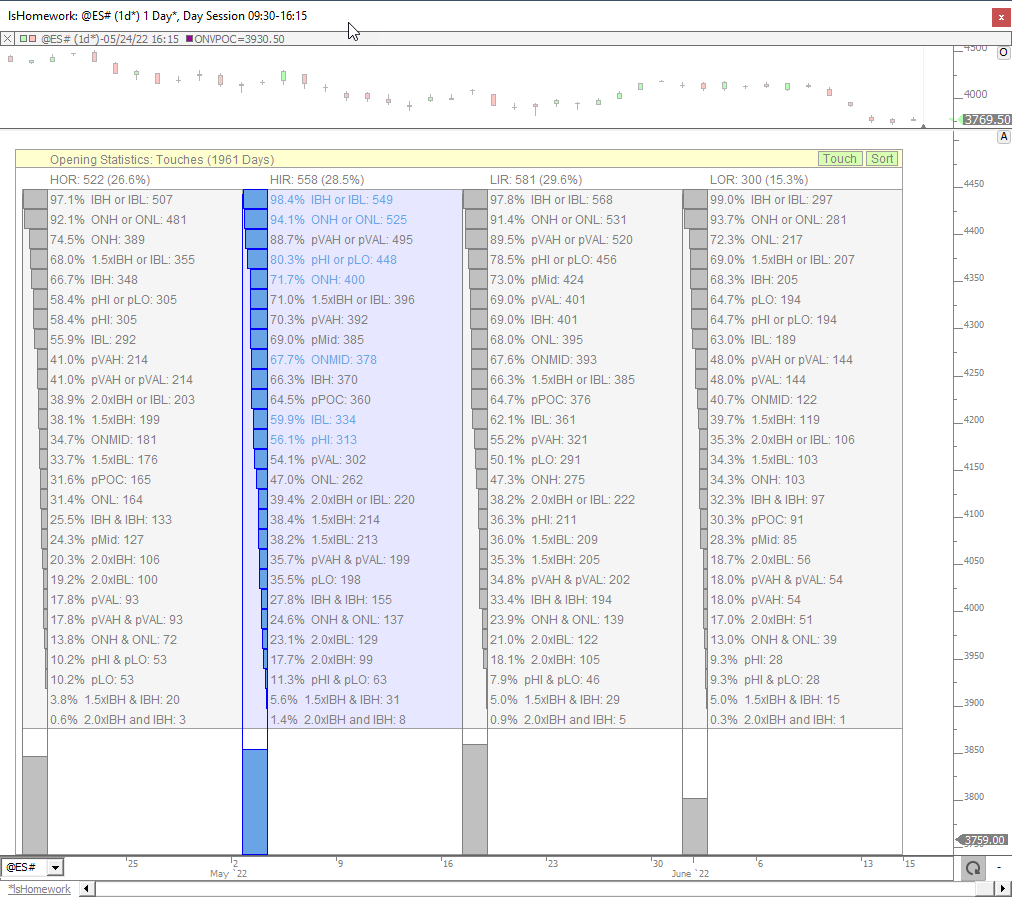Where does price go based on where price opens?
The Homework (HW) RTX Indicator is designed to compute and accumulate price-based statistics on daily data. The indicator is focused on percentages of touching or closing above key prices based on where price opens the day session. The statistics are placed in buckets based on opening positions of Higher Outside Range (HOR), Higher Inside Range (HIR), Lower Inside Range (LIR) or Lower Outside Range (LOR). If price opens the day above the previous day session high, it is considered Higher Outside Range. If price opens the day between the previous close (or Mid) and the previous high, it is considered Higher Inside Range. If price opens between the previous close (or Mid) and previous low, it's Lower Inside Range. And if price opens below previous day session low, it's Lower Inside Range. Within each 4 of these opening types (HOR/HIR/LIR/LOR) HW inspects how often we touch key prices as well as how often we close above or below these key prices. HW also looks at price pairs like 2xIBH/2xIBL, ONH/ONL, IBH/IBL and computes how often we touched both, one, or sometimes neither of the prices. The HW Indicator should always be added to a chart set to day session, and set to a periodicity of Time Per Bar: 1 Day (as this periodicity is built from tick / 1 minute data) and not the "Daily" one.
Important notes :
To run this very specific indicator, it is recommended to import the chart definition shared in the "Examples" tab
Homework RTX was created to gather in a single location all these market statistics, which were previously generated through multiple charts and studies, having been developed over the past 10 years by Chad L. Payne of Linn Software. If you want to learn more about these valuable studies, please visit the Homework series webpage (with more than 50 videos and chart definitions) or review the dedicated forum section.
Presentation









